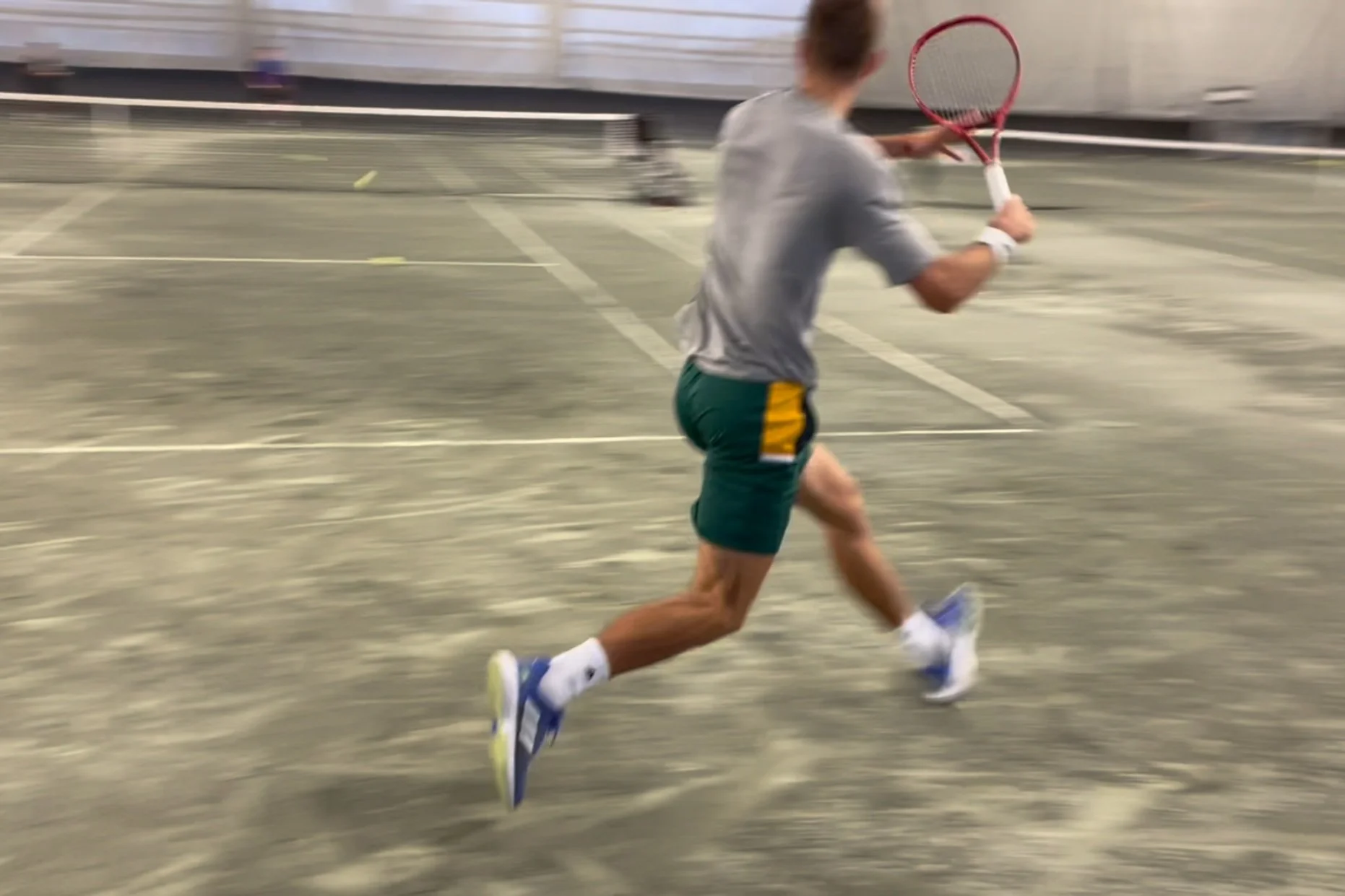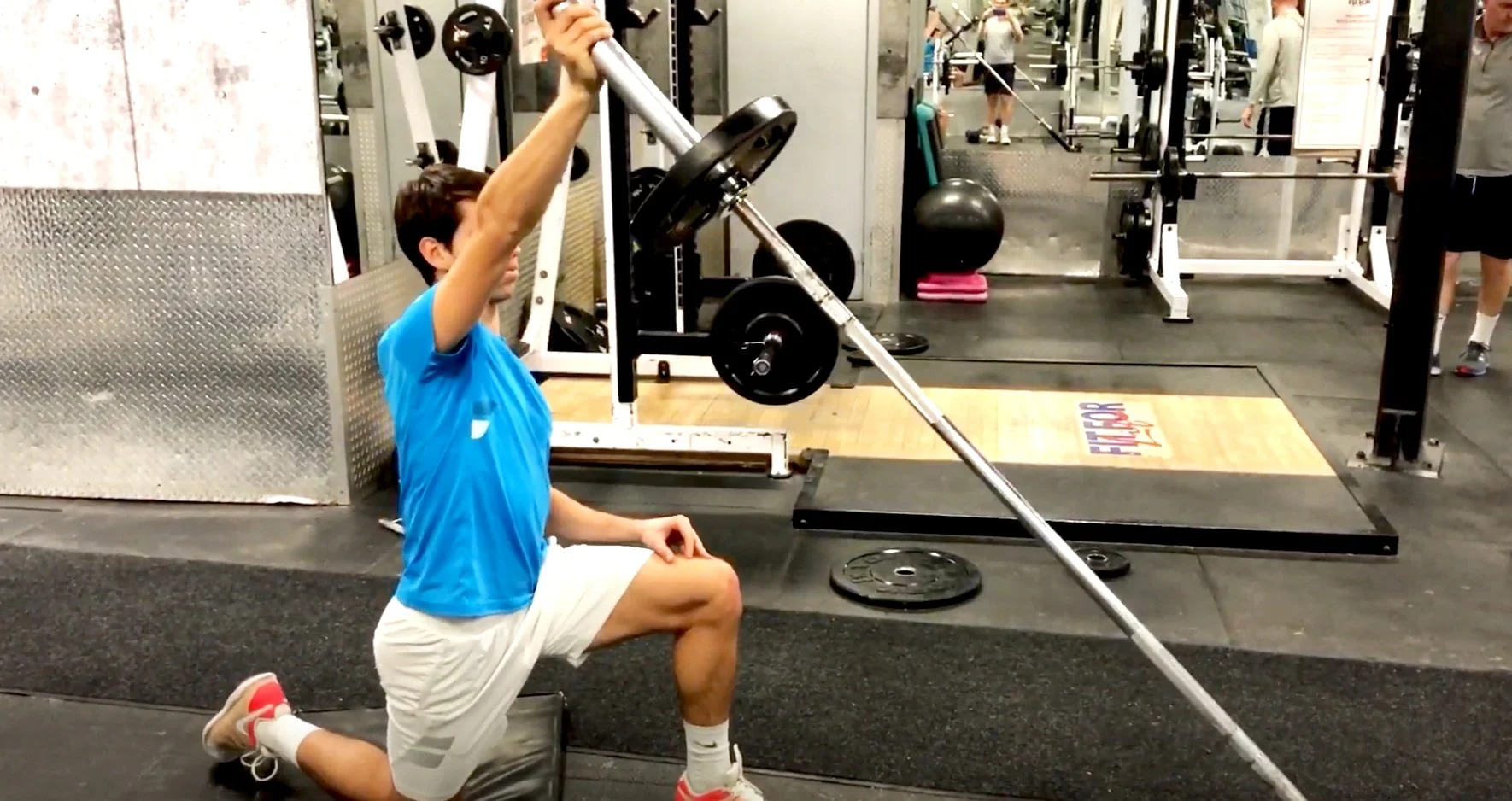Many in tennis associate shoulder health with resistance band exercises. Listen to coaches and trainers talk about shoulder strength or injury prevention with their players and you’ll surely hear things like “are you using your bands daily?” or “make sure to do ‘x’ or ‘y’ band exercise”. But do band exercises work in the manner that they’re spoken about?
I’d like to offer my take on the matter and suggest 2 other strength training methods - light weight and moderate/heavy strength exercises.
Last week, we looked at the importance of a post-match recovery routine for the tennis shoulder. This is based on a couple key factors. First, the current trend of modern tennis is heavily reliant on successful serving. And second, scientific evidence points to losses in both range of motion (ROM) and strength, along with shoulder/arm soreness, post matchplay. If you haven't read that post, take a look at it here as it helps provide the framework for this week's follow-up article.
Picture this, you just got off court after a long 3-set battle. You’re tired, exhausted, fatigued (insert any other word you wish). The last thing you want to do is spend another 30 minutes or more recovering from the match. But guess what, if you’re a junior who’s playing another match the same day or a pro playing a match the following day, you’ve got no other choice. Well that’s not entirely true, you do have another choice and that’s to do nothing at all and basically just show up for your next match.
BOTH Andy Murray and Novak Djokovic have been in the news of late with elbow injuries. While Novak is back competing, Andy is still on the sidelines with a suspected "tear" around the elbow (no further details have been mentioned). Both missed the Miami Open this year and while they'll likely be back in form soon, I thought it was a good time to discuss why elbow injuries happen and some ideas on what we can do about them.
A fairly recent retrospective study from Sports Health: A Multidisciplinary Approach analyzed serve volume in professional and junior tennis players. The researchers sought out to find how many serves are hit in a set (and match) by pros and juniors. The aim of the study was to use this serve data to develop an interval serve & groundstroke training program for elite tennis players. Although others have attempted to devise this type of program for tennis players, this is the first to my knowledge that has looked at more recent serve data while at the same time developing a program that took into account intensity (as a % of max speed) rather than just volume (i.e. number of serves).
This week I’ll be traveling to London UK to take part in the Functional Range Conditioning (FRC) course (aka an excruciating experience on your hips...or so I've been told). The FRC course - created by Dr. Andreo Spina, owner and founder of Functional Anatomy Seminars - is a system of mobility training rooted in scientific research. I’ve always integrated mobility & flexibility work with my athletes and have a pretty good understanding regarding its underlying mechanisms but why not learn from someone who has devoted their life’s work to improving mobility, joint function and athletic performance. And...he’s worked with a number of pro athletes, including world no. 4 Milos Raonic (see video below).
There’s no question the shoulder takes a beating in tennis. I mean, players use it on every shot. Whether that’s to create lots of torque to hit a big forehand or to stabilize the shoulder when punching a volley...the shoulder has many functions and roles. But perhaps the biggest toll on the shoulder occurs in a movement you wouldn’t normally consider...the deceleration phase (aka the follow-through phase) of the serve. This is the moment after impact where the posterior muscles of the shoulder act in an eccentric manner to essentially stop the head of the humerus from being dislodged from the glenoid fossa (aka think arm dislocating from shoulder...that wouldn’t be fun). Ellenbecker & Kovacs (2008) call the deceleration phase “the most violent of the tennis serve”. That’s a pretty big statement, and probably something that needs to be considered in the training of the tennis shoulder. But why exactly is this phase of the serve so critical? What type of strength is necessary? And what kind of exercises can tennis players incorporate into their program to optimize the serve keep the shoulder healthy? We’ll explore all of these points in this article, so read on.








